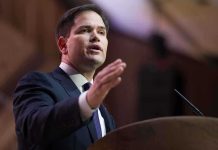
What happens when a prestigious university’s reliance on federal funding collides with a government wielding it like a political cudgel? Welcome to the financial calamity engulfing the University of Southern California.
At a Glance
- USC faces $300 million in federal funding cuts under the Trump administration.
- The university is grappling with a $200 million budget deficit.
- Staff layoffs and hiring freezes are inevitable as USC attempts to stabilize.
- Federal funding cuts are tied to compliance with new policy guidelines.
The Financial Crisis at USC
USC, a cornerstone of academic excellence and research in Los Angeles, is facing a financial storm. With a staggering $200 million operating deficit and looming $300 million federal funding cuts, the university is in dire straits. The Trump administration’s policy shifts, affecting federal research funding, are a direct blow to USC’s budget, which heavily depends on federal grants for research, hospital operations, and student aid.
The administration has tied funding to policies on diversity, equity, and inclusion (DEI), anti-Semitism, and gender participation in sports, leaving universities scrambling to comply or face financial penalties. This isn’t just a USC problem; it’s a crisis echoing through California’s higher education landscape, with other institutions like the University of California system reporting similar fiscal woes.
Impact on USC Community
USC Interim President Beong-Soo Kim has enacted austerity measures to stem the financial hemorrhage. These include a zero-merit increase for the fiscal year 2026, discretionary spending cuts, and eliminating certain third-party services. Administrative units are slashing budgets by 10%, while schools must cut 5%. As a result, layoffs are unavoidable, and hiring freezes are already in place.
For USC’s faculty and staff, the immediate future is bleak. Job security is eroding, research projects are at risk of cancellation, and the campus atmosphere is clouded with uncertainty. Students, too, are feeling the pinch. Financial aid and student services may dwindle, potentially affecting enrollment and retention rates, particularly among international students, who are a significant revenue stream for the university.
The Ideological Battle
The Trump administration’s funding strategies are a calculated move to steer university policies towards conservative priorities. Universities must now navigate a complex web of ideological compliance to secure federal funds. Critics argue this is an attack on academic freedom and a politically motivated move that undermines the research ecosystem.
Analysts describe this as a “multi-front assault” on federal research funding, endangering scientific progress and public welfare. While legal challenges may hinder some federal actions, the uncertainty is already affecting university operations and morale. The broader academic community watches warily, knowing that this could be the new norm for federal funding.
Long-Term Consequences
If the funding cuts persist, USC’s status as a leading research institution is at risk. The ability to attract top-tier faculty and students will diminish, and the university’s contributions to scientific and medical advancements could be severely compromised. Long-term structural budget cuts may lead to permanent reductions in academic programs and support services, further eroding USC’s academic standing.
The ripple effects extend beyond USC. California’s higher education sector, a crucial component of the state’s innovation ecosystem, faces significant challenges. As federal funding becomes a political tool, research agendas, especially those targeted by policy changes, may shrink, stifling innovation and competitive edge in the global research arena.




















